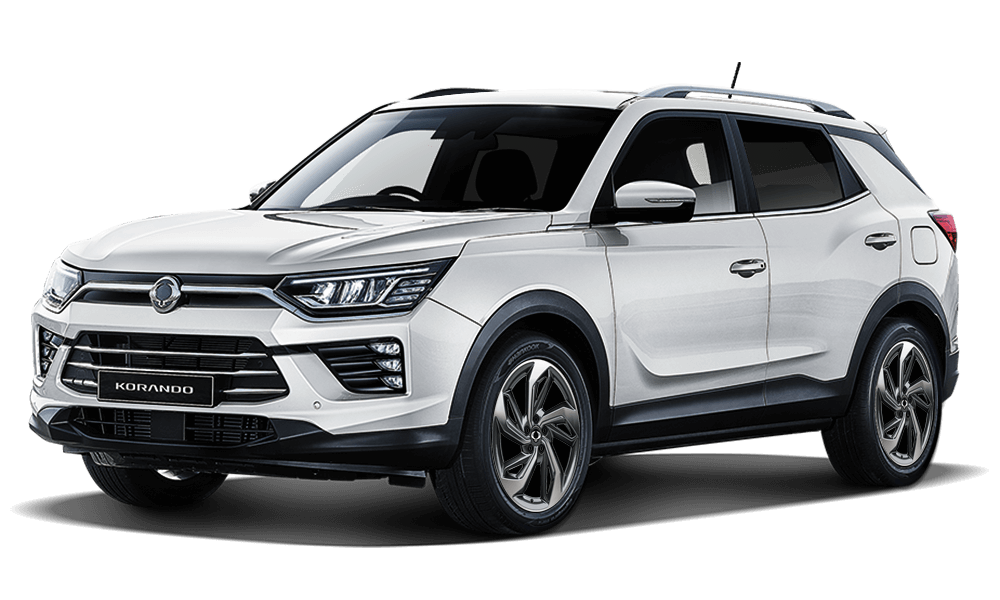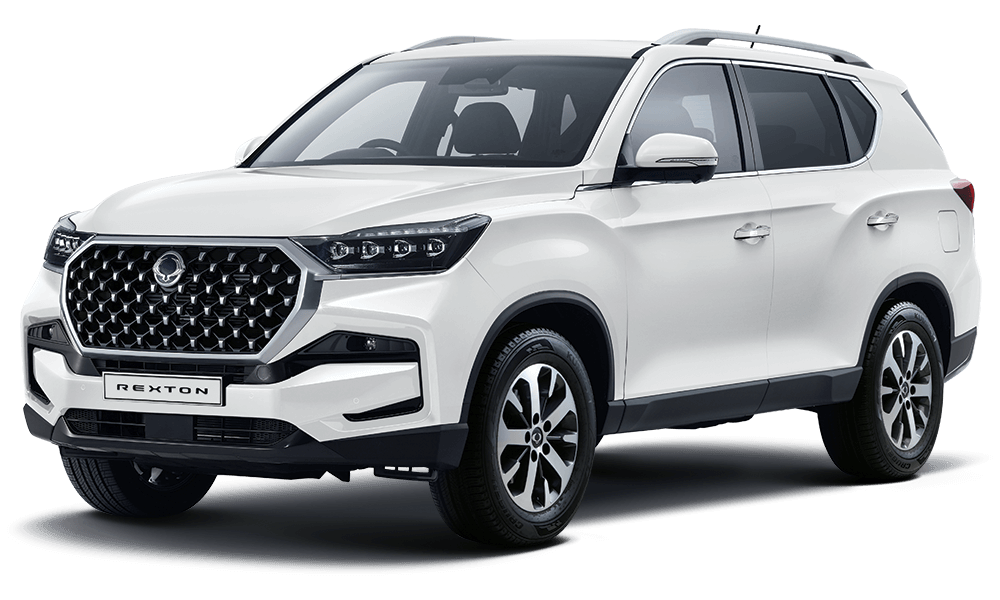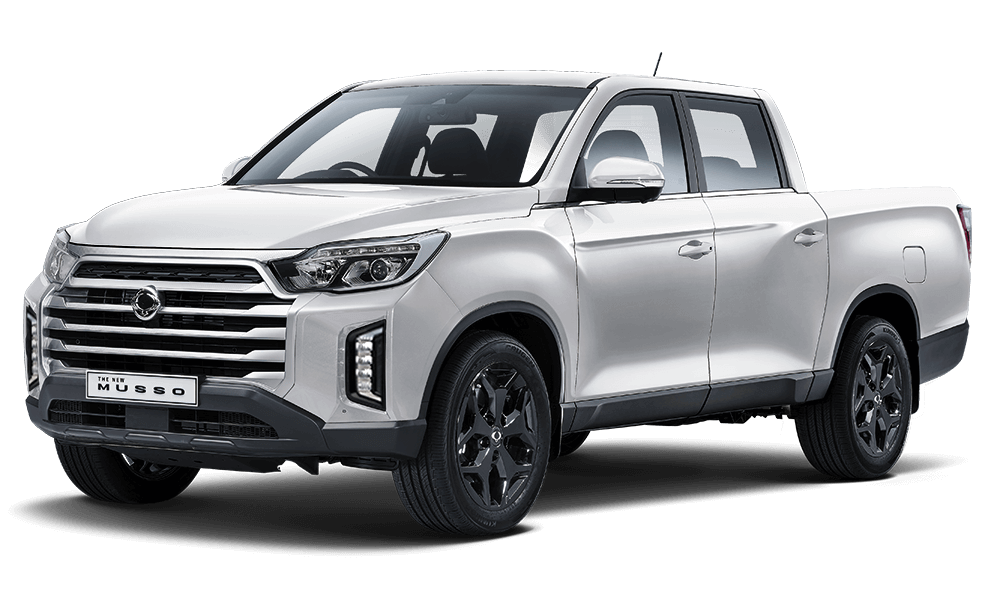SsangYong Musso Ultimate 2019 review

Review courtesy of CarAdvice
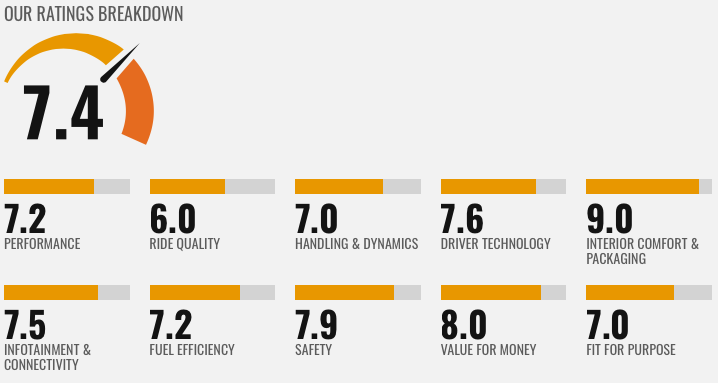
|
8.6L |
133kW |
185g |
N/A |
SsangYong’s Musso Ultimate is a refined, well-equipped ute designed for ‘lifestyle’ buyers who don’t need to carry particularly heavy payloads.
“What the hell is that?”
That sentence, or something like it, was a common refrain from my week in the unusual-looking SsangYong Musso, though not always said with scorn.
To answer the question, it’s Korea’s only dual-cab ute and is produced by the SsangYong brand, which has recently returned to Australia – this time as a factory-backed distributor with the intention of fixing parts shortfalls that hurt it the first time around.
You may rightly say that this crowded market needs more car brands like it needs a smack in the head, but there’s some merit to this one from a product perspective. Here we’re looking at the flagship variant called the Musso Ultimate, which is priced at $39,990 drive-away.
That kind of money will get you a base version of more established dual cabs (or perhaps a mid-range Mitsubishi Triton), but the Musso as tested comes loaded with spec more familiar to a luxury SUV. The angle is obvious, then.
Right off the bat, we should also commend SsangYong for its willingness to loan vehicles to the press with the knowledge we may not be complimentary. Fellow ute-maker LDV, represented by SsangYong’s former private distributor Ateco Automotive, steadfastly refuses to loan T60 vehicles to the media. Would you trust such a brand?
Before digging into the niceties inside, let’s look at some specs. It’s a big bugger, 90mm wider than a Ford Ranger and par with a VW Amarok, yet also a foot shorter thanks to its stubby pallet-wide (between the arches) tub replete with bed-liner and a 12V socket. This is the short version, with a stretched model to arrive in April with a higher payload and 310mm of extra length to equal its foes.
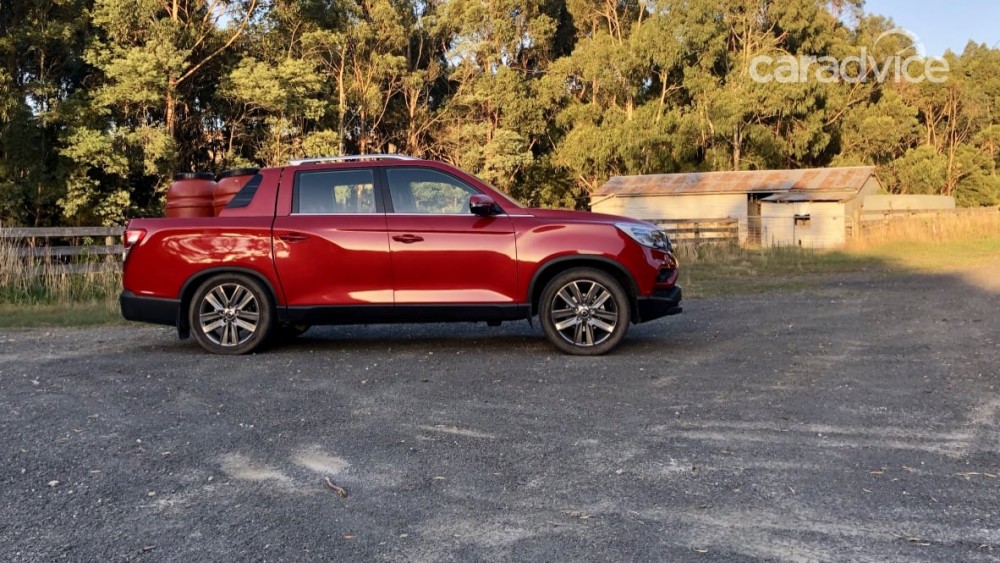
Said tub dimensions are 1570m between the arches, 1300mm long and 570mm deep.
I’d note that the plastic tray liner feels a bit cheap compared to a spray-on option, and the plasticky rear bumper cannot hope to match a proper steel one. That spoiler/sail plane makes the 90-degree rear pillar/window look less awkward than on the EX and ELX grades and is made of metal, though some traditional bars would probably be preferable…
The shorter Musso version tested here also comes fitted with double wishbone suspension at the front and (like a Nissan Navar) road-oriented five-link rear suspension with coil springs to maximise sealed road contact and body control. By contrast, the long version will use more segment-conventional leaves. The trade-off is a modest 790kg maximum payload, 230kg shy of said longer version.
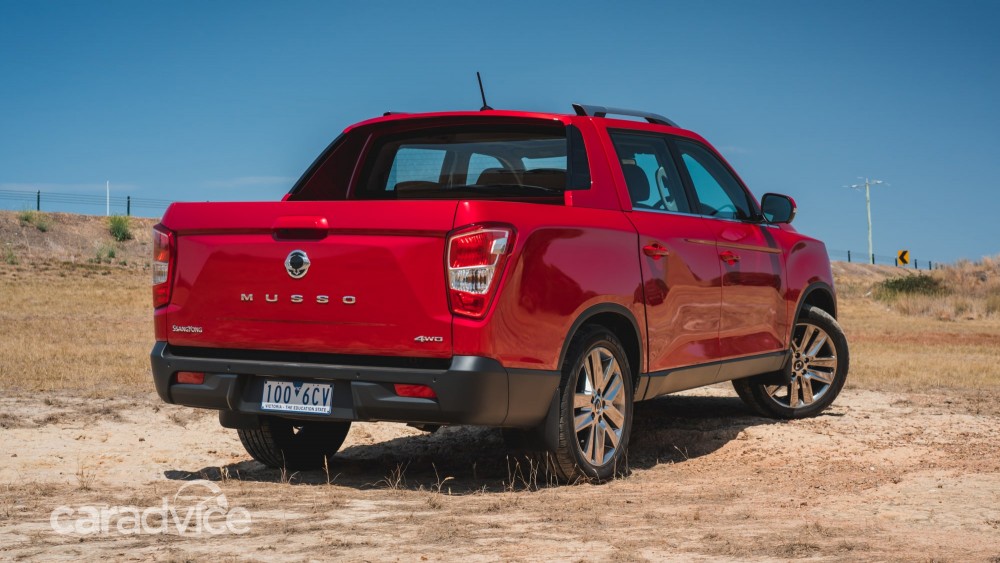
I put 550kg of water barrels in the rear, and that rear end was squatted right down to near-full compression. Not great, that. Steering, braking and uphill performance were acceptable still, but if you regularly carry heavy things, then the LWB version is where you should look. Or towards a rival…
It’s quite clear that the Musso Ultimate we have here at least is a shorter, carpark-friendly ute that prioritises road comfort and ‘lifestyle’ buyers more than most competitors. And put aside your qualms, because there’s certainly a market for something like this.
With that as a brief, the SsangYong mostly succeeds. It’s a genuinely nice ute to get around in for the most part, with heavily assisted and rather direct steering, a hint of agility and more-than-acceptable body control against cornering loads, and road/wind/engine noise suppression to rival anything this side of a Mercedes-Benz X-Class. Colour me pleasantly surprised.
The only real weakness from this lightly laden perspective is soon to be addressed. The suspension calibration as it stands relays a little jitteriness into the interior, not helped by the fact the Ultimate sits on Kumho road tyres with slim sidewalls and 20-inch blingy wheels. Commendably again, SsangYong is currently working on an Australian-market suspension tune based on this feedback.
It has a good engine as well, even if it’s not a licensed Mercedes unit as per old SsangYongs. It’s an in-house Euro VI 2.2-litre turbo diesel with class-competitive outputs of 133kW at 4000rpm and peak torque of 400Nm between 1500 and 2800rpm.
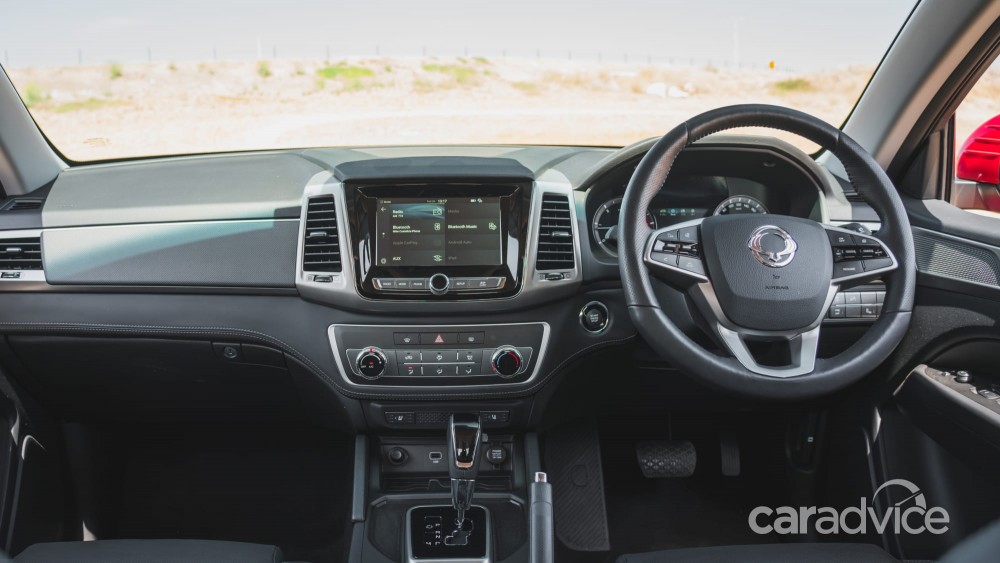
You’d be hard-pressed to call it underpowered, though that peak torque output trails the main competitor set including the Triton, Toyota HiLux and Isuzu D-Max, and those who value displacement will note it is among the smallest in class.
I sat consistently at around 10 seconds for each 0–100km/h run, which is competitive, and got within cooee of the ADR fuel-use claim of 8.6 litres per 100km (managing 9.1L/100km on a combined cycle loop). The tank is 75L.
What really impressed about it was the NVH suppression. It’s extremely refined and smooth, even at idle. Again, urban-friendly. The six-speed automatic gearbox is supplied by Japan’s Aisin and is generally pretty crisp, though I noticed the odd indecisiveness at highway speeds, where it oscillated between fifth and sixth gear.
Our test vehicle lacked a tow ball (we’ll rectify that next time), though the company claims an equal class-leading 3.5-tonne braked-trailer capacity. As with most utes in this class, anything the low side of 2.5t is more appropriate.
The Ultimate is a standard part-time 4x4, with dial-operated 4H and 4L (low-range) settings, though its 215mm of ground clearance and those tyres mean it’s not going to match a D-Max or HiLux off the beaten path. For that we’d suggest a Musso EX base model on chunkier rubber. It’s worth noting that you do get a locking rear diff, though, and a beach run is easily achievable.
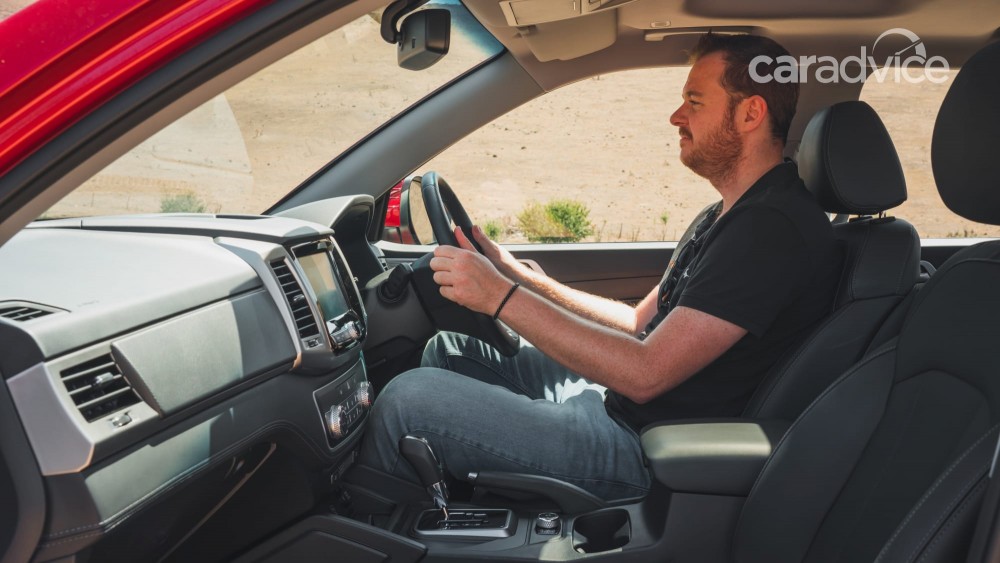
One area that’s hard to find much fault with is the interior. At $40K most rival utes are ‘stripper’ specials, whereas the Musso Ultimate has everything including the kitchen sink, including a sunroof, keyless go, heated and ventilated leather seats, a 360-degree camera with great resolution, an electro-chromatic rear-view mirror and an 8.0-inch touchscreen with Apple CarPlay and Android Auto.
There’s also a list of active safety tech that only a Triton can claim to get near to at this pricepoint, such as autonomous emergency braking, blind-spot monitoring, rear cross-traffic alert, lane-departure alert and front/rear sensors. Also, there are six airbags including curtains in the rear unlike an Amarok. Disappointingly, there’s no ANCAP rating yet, however.
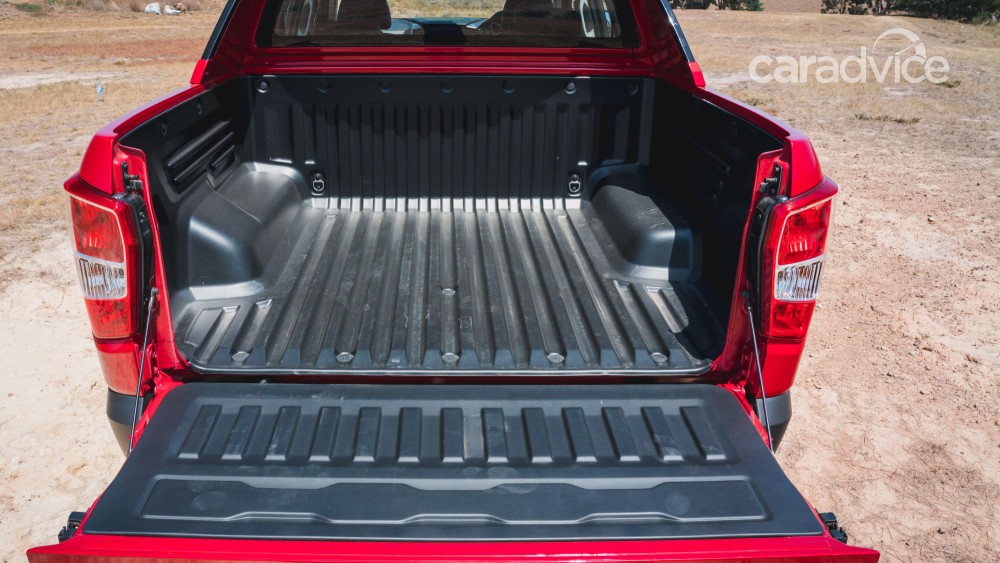
It’s also a well-built cabin with high-grade material quality (and plenty of easy to clean plastics on the doors), good amounts of interior storage, a highly legible selection of digital speedos, front seats that are certainly comfier than a Triton’s, telescopic steering column adjustment and touchscreen font pinched from the Volvo XC90.
The only negatives that really leapt out were the lack of proper sat-nav for times outside of 4G (rare, admittedly), cruise control that creeps above the limit down hills, and a tacky gear shift gate with a plastic button controlling the manual override.
The back seats are great too, trimmed in leather with electric heating elements running through them, and the ability to tilt backwards by 27 degrees. There are also B-pillar hand grips to pull yourself up, roof scalloping behind the sunroof section, a flip-down padded armrest with cupholders, a seatback section that folds down to help you fit a child seat, and rear air vents.
My 193cm frame also had ample space and good outward visibility, certainly more than what a Navara or X-Class offers, and by seat-of-the-pants about on par with a Holden Colorado.
I can’t help but think of the Musso as a nice crossover SUV with a tray. The Rexton DNA is fairly abundant.
On a side note I tossed the keys to our Chief Technology Officer, and VW Golf R driver, Cam, who took his wife and two kids on a weekend road trip for a different view on things. His thoughts are added here verbatim:
“In so many ways it felt like a passenger SUV trapped in a ute’s body. The comfortable seats, the remarkably quiet engine,” he noted.
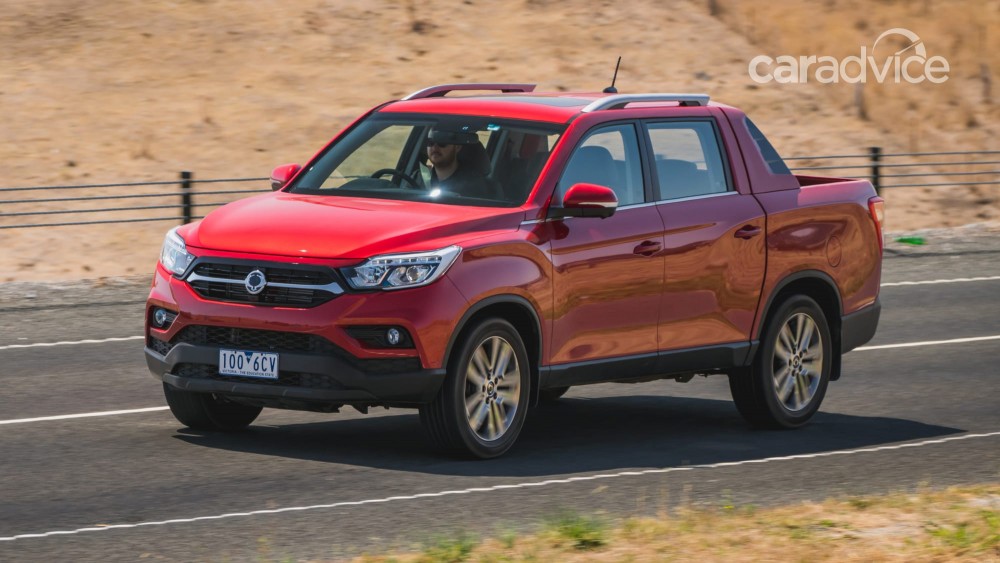
“Plus the fact that the length is kept in check by the abbreviated tray, which made it comparatively easy to park. Sometimes I could almost forget I was driving a ute at all. Perhaps until hitting some of the more uneven sections of the Princes highway in Gippsland, where it got pretty jittery.
“It did make me wonder whether it would be any good at all as an actual commercial vehicle.
“Here and there the aura of bargain-priced refinement falls away, like the clunky transmission shifter. Special mention is reserved for the infotainment system… this is one of those cars where jacking in for CarPlay is a mandatory. I’m not a CarPlay fan at all but I ran into its arms every time.”
Back to the regular review now. To its credit, SsangYong is also backing its product with an equal-market-leading seven-year bumper-to-bumper warranty with no distance limit, with ABN buyers covered. There’s also roadside assist for the term of your warranty and capped-price servicing across each 12-month/15,000km interval. Given the newness of its market launch, there are no advertised prices as yet that we can find.
`The downside of opting for a relatively new and niche brand is the small dealer network coverage (28 national sites for now, though this will grow), and a small carpark out there to guide you on appropriate resale value.
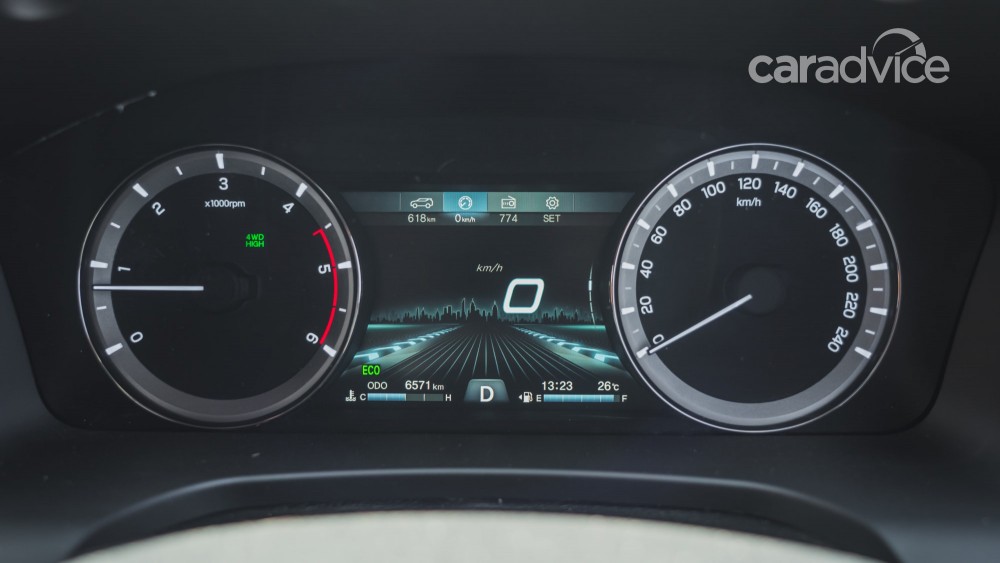
But as with the Rexton, the Musso is a pretty good product story. If you regularly haul heavy loads, we suggest you wait for the LWB version, and potentially for versions with Australian-market suspension calibration too.
But there’s a market for a $40K ‘luxury’ ute with urban-focused attributes like an SUV might offer, an imposing sort of design language, and a strong warranty coverage to offset any doubts you might have around the brand.
Put it this way, the Musso Ultimate as tested may not be the workhorse to end all workhorses, but it’s well ahead of the class average when it comes to refinement, interior design, active safety tech, warranty, and value for money. Those attributes mean it wouldn’t be ridiculous to take a longer look.
Comfortable and luxurious interior
Lots of active safety tech
Refined and muscular diesel engine
Long warranty/roadside assist program
Value for money
Minimal payload and short tub
Some suspension 'jitteriness'
Small dealer network for now
Aisin gearbox's calibration
No ANCAP crash rating







